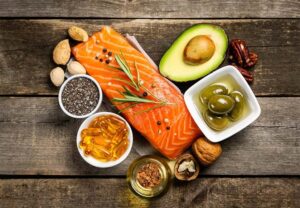By ELIZABETH HARTLAND
There is mounting evidence that the basis of good health in adult years is laid down both during pregnancy and within a child’s formative years.
As a parent, the time spent nourishing your child properly may be the greatest contribution you can make to their development. In today’s snack culture, in which children and adults are bombarded with advertisements for junk food (high in saturated fat and sugar), developing good eating habits for children is vital.
Boosting your child’s immune system
The immune system can be thought of as the army that defends your child from a variety of invaders. These include viruses, bacteria, yeasts and foreign proteins such as undigested food molecules, parasites, environmental chemicals and free radicals – highly reactive chemicals and molecules that damage cells.
Young children will always get ill. When they start going to school, they catch, on average, a common cold once a fortnight. It is important to realise that young children need to build up their immunity by catching colds and diseases and being exposed to bacteria. However, with the right approach, colds and flu can be dealt with naturally.
A child’s first opportunity to build up immunity is during breast feeding, which allows them to absorb a large number of antibodies from their mother. Breast feeding also provides a dose of good bacteria for their digestive tract.
The continued development of a healthy immune system can then be established with a healthy diet and lifestyle to include a good variety of exercise.
It is never too late to start your child on the road to health by providing him/her with the correct nourishment and care. Aim to:
• Provide a concentrated form of protein each day i.e. eggs, lean meats (poultry or game), oily fish. Avoid cured pork (ham, bacon, salami). To reduce saturated fat intake, only serve lean red meat (beef or pork) once a week (if at all!). Offer poultry, game and fish as healthier alternatives. Include oily fish at least twice a week for the beneficial essential fats.
• Serve a variety of grain and pulse dishes for additional protein intake.
• Encourage the avoidance of processed foods, biscuits, pastries, cakes, crisps, squashes and fizzy drinks containing sugar or artificial sweeteners, chocolates and sweets.
• Replace the above with healthy snacks: fresh fruit, crudités, mini rice crackers or poppadums, oatcakes (spread with fruit spreads, sunflower spreads, nut butters, tahini, hummus, salsa or cottage cheese), homemade salt and sugar free popcorn (use olive oil and sprinkle with cinnamon for added flavour), un-sulphured dried fruit, whole grain bread sticks.
• Use whole grains instead of refined grains as a source of fibre and minerals. e.g. brown rice, rye flakes, porridge oats, wholemeal bread, rye bread.
• Encourage your child to have at least five servings of fruit and vegetables a day.
• Avoid margarine and processed oils. Use unhydrogenated margarines like Vitaquell or Vitaseig (or butter in moderation!) for spreads. Use extra-virgin olive oil for cooking and dressing. Use flax seed oil in dressings or shakes.
• Ensure to serve natural mineral water. Make sure your child drinks enough water. Water helps to keep toxins flushed out, meaning they are not hanging around to add an extra load to the immune system.
Some healthy breakfast, lunch and snack ideas may include:
Breakfast suggestions
• Home-made muesli: Use raw ingredients of your choice – preferably organic wholegrain cereals – choose from oats, rice flakes, millet flakes, barley flakes or rye flakes, sesame seeds and ground fresh nuts (almonds, brazils, cashews, pecan, hazelnut). Serve with rice dream, goat’s milk or fresh cow’s milk, mixed fresh fruit salad – 1 banana, mango, pear, peach and strawberries and natural soya or goat’s yoghurt (sweeten with a teaspoon of honey if required).
• Scrambled/poached/boiled egg with rye or wholemeal toast.
• Millet or oat porridge made with fresh cow’s or goat’s milk with a teaspoon of honey to sweeten.
Lunchtime suggestions at home
• Home-made soups followed by oat cakes spread with hummus, mashed avocado and tuna spread or feta cheese followed by chopped fresh fruit.
• Toasted rye or wholemeal bread with ‘organic’ whole earth baked beans (available from health food shops) followed by chopped fresh fruit salad and natural soya or cow’s milk yoghurt.
Packed lunches
• Mini oatcakes
• Chopped cooked chicken (ensure to keep it cold!)
• Sliced pear or apple
• Vegetable sticks and shapes: carrot, cucumber and cherry tomatos, celery
• Sliced avocado and banana sprinkled with lemon juice
• Soya yoghurt flavoured with apple juice
• Banana and date or banana and fig fruit bars (available from health food shops)
Snack suggestions
• Organic fresh fruit
• Crudités-cucumber, red and yellow peppers, carrots and mushrooms are all good with a healthy dip or on their own.
• Flavoured mini rice crackers, corn tortillas and mini poppadums are available from health food shops. These are a good alternative to crisps or sweets.
• A bowl of cereal-a nutritious way to sustain an appetite into the next meal. Choose home-made muesli, porridge. Add a little chopped fruit and some goat’s, rice or fresh cow’s milk.
• Oakcakes and mini rice cakes can be brought from most supermarkets. They can be spread with 100% fruit spread, sunflower seed spread, nut butters, tahini or hummus.
• Popcorn can be made in minutes: use olive oil and sprinkle with cinnamon for added flavour.
• Raisins and dried fruit are a great standby but should not be used too often.
• Natural soya or cow’s milk yoghurt with added sliced fresh fruit and a teaspoon of honey to sweeten.
• Kettle slightly salted crisps, given occasionally.
By ELIZABETH HARTLAND features@algarveresident.com
Elizabeth Hartland has a Bachelor of Science Degree in nutrition, together with a Diploma from the Institute of Nutritional Therapy. She is married with two young children and has a passion for good nutrition and helping others to find better health.

























